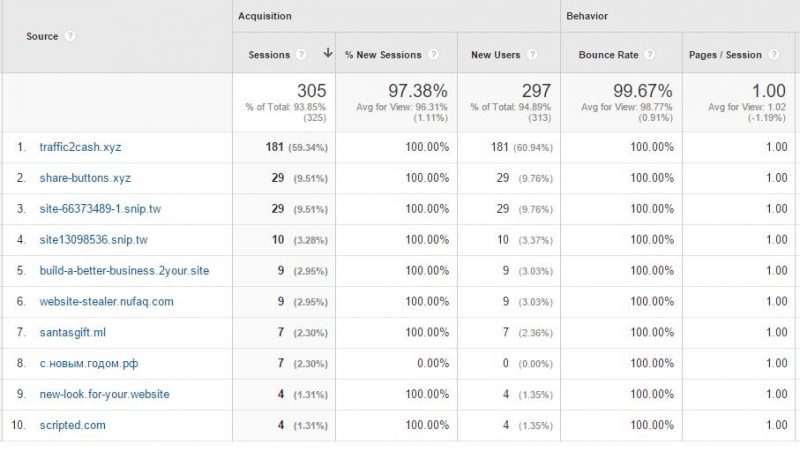A few months ago we published a piece on Google Analytics Spam Referral Sites. We had the opportunity to check-in on that same test site and saw a new form of spam, language. We take a quick look at what this type of unwanted messaging looks like and show why it can be effective to beginning webmasters.
Forms of Google Analytics Spam We Are Seeing
The first type of Google Analytics spam that we have been seeing focused on referral sites. With these sites, spammers are trying to get those using Google Analytics to go to their top referral site lists and click on the sites. Webmasters frequently do check referral sources to figure out where traffic is coming from. Here is an example of a test domain we set up and here is an example of the traffic generated in 30 days to target the referral page.

Since that time here is a new scheme, targeting the Language box. For many Google Analytics users the Language page is on their dashboard so there is no drill-down required to get to it. As you can see, the test site’s most popular language is not a language. Instead, it is from a “Google.com” however the “G” character is not a standard English “G.” Note, Google does not use Analytics spam to push traffic to its sites.

We can see that this is not a simple and single incident. Instead, five of the top eight languages are being manipulated by these spammers three of which invoke Google’s name. There is an easy fix for this. The company can create a master list of languages and match against that. Even with the immense resources backing the platform, those looking for inexpensive advertisements have found an easy way to push their message. For larger sites this is much less effective since 100 sessions or less over a month would be buried at the bottom of the languages list. For those webmasters just starting out, this is going to be found directly on their dashboards.
What this does show us is an important lesson. Web server traffic is not just legitimate users of the site, but a significant amount of website load is also used dealing with this type of content. Ensure you plan your servers and VMs accordingly to handle these innovative, yet unwanted loads.




